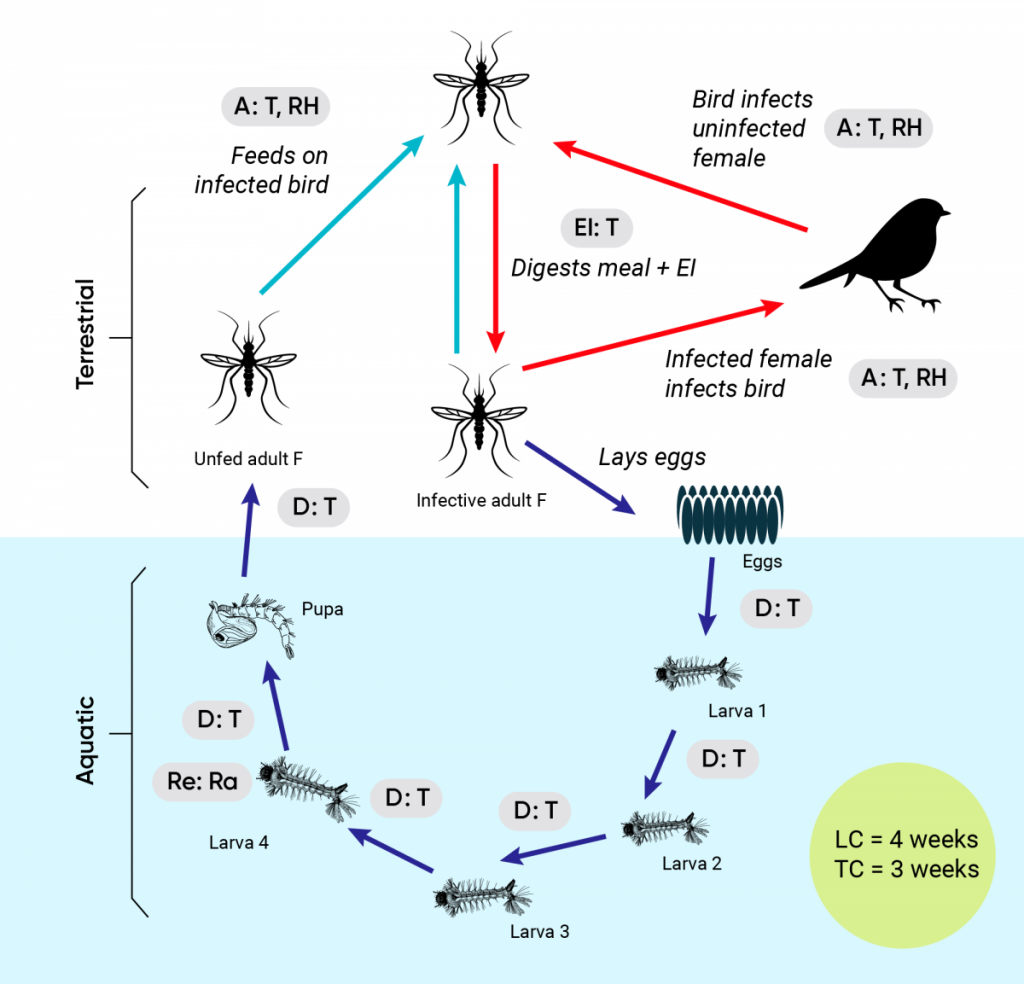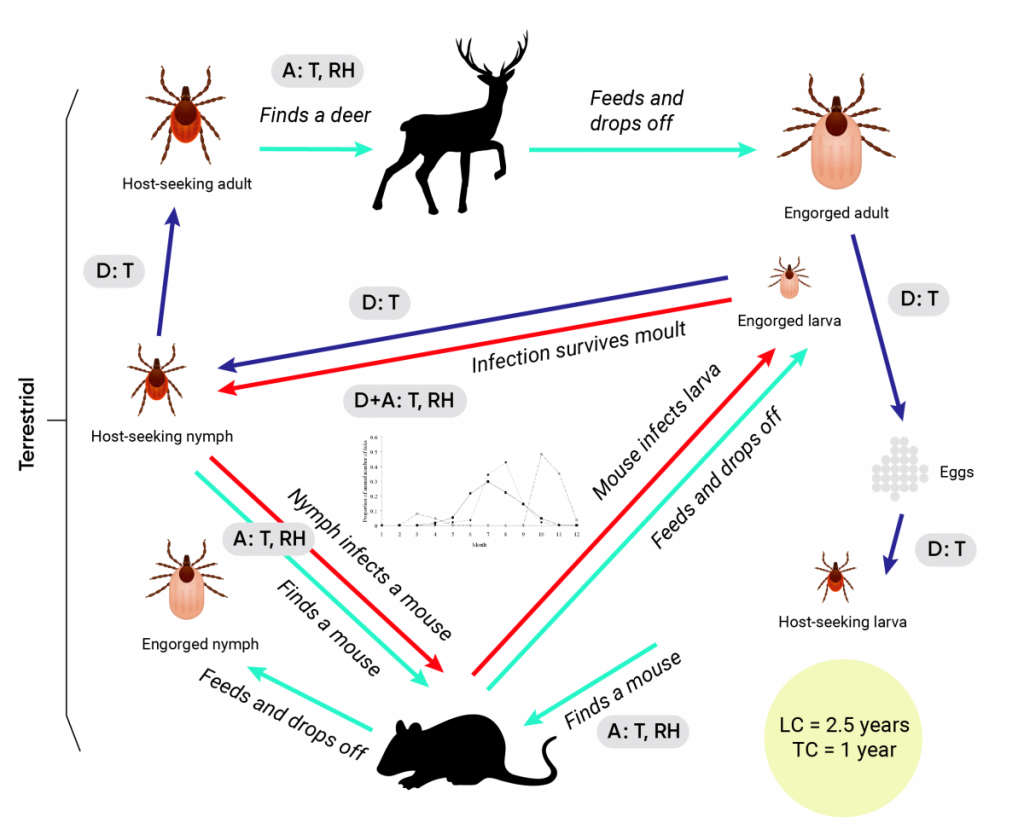

The impacts of climate change are illustrated using the life cycle of the mosquito Culex pipiens and its role in the transmission of West Nile virus (WNV) in A. The life cycle of the tick Ixodes scapularis and its role in the transmission of the Lyme disease agent Borrelia burgdorferi is illustrated in B. In both, dark and pale blue arrows indicate development, and host finding/detachment from hosts, respectively, while red arrows indicate pathogen transmission cycles. Points at which weather and climate (and potentially climate change) may affect the vector’s life cycle (LC) and pathogen transmission cycle (TC) are indicated by the grey-filled boxes in which A = effects on activity, D = effects on inter-stadial development rates, EI = effects on the extrinsic incubation period, Re = effects on reproduction, T = effects of temperature, Ra = effects of rainfall, and RH = effects of humidity. In the centre of the B. burgdorferi transmission cycle (B) is an illustration of the seasonal activity of the tick vectors, which may be affected by climate and climate change through effects on both development and activity, as described in the text.
Ogden & Lindsay, 2016.